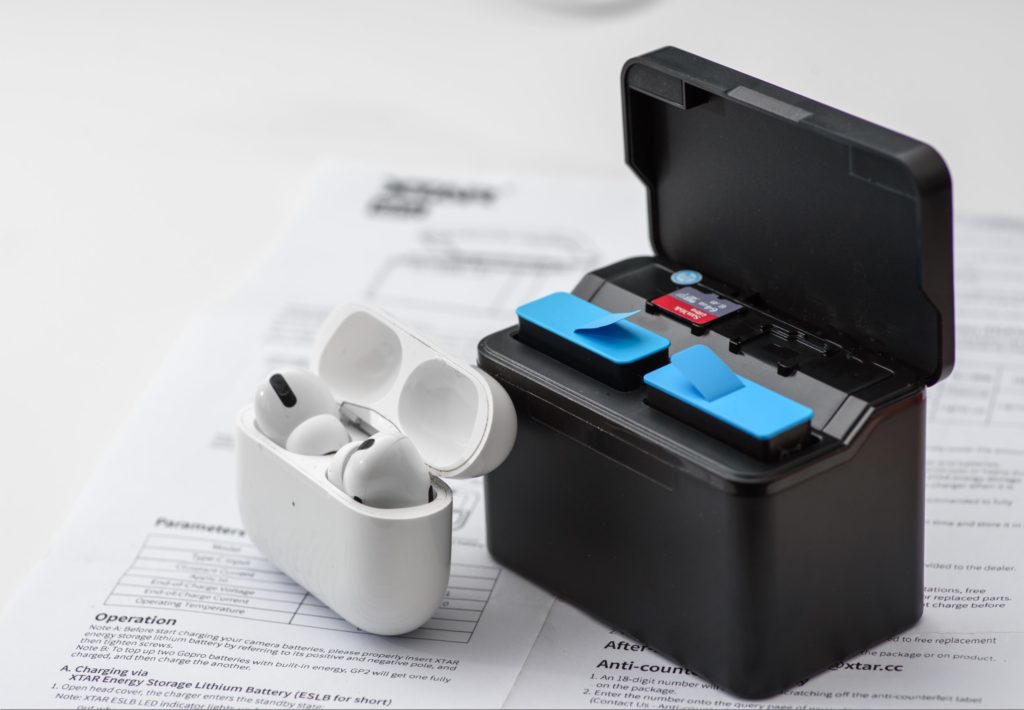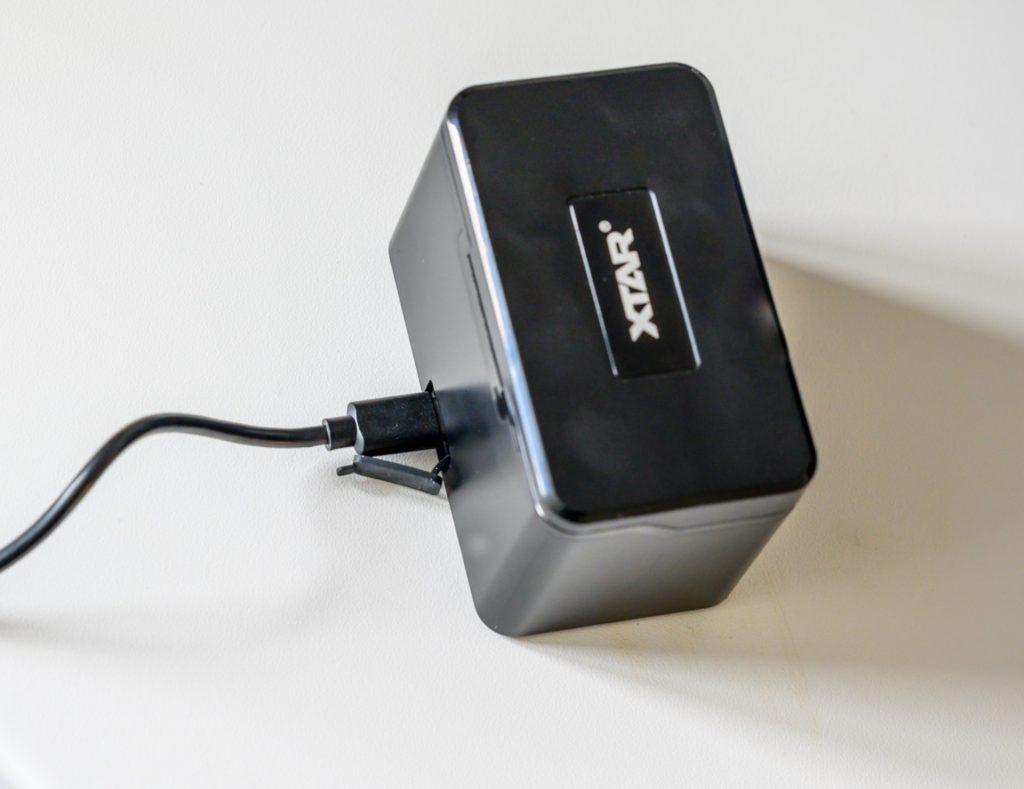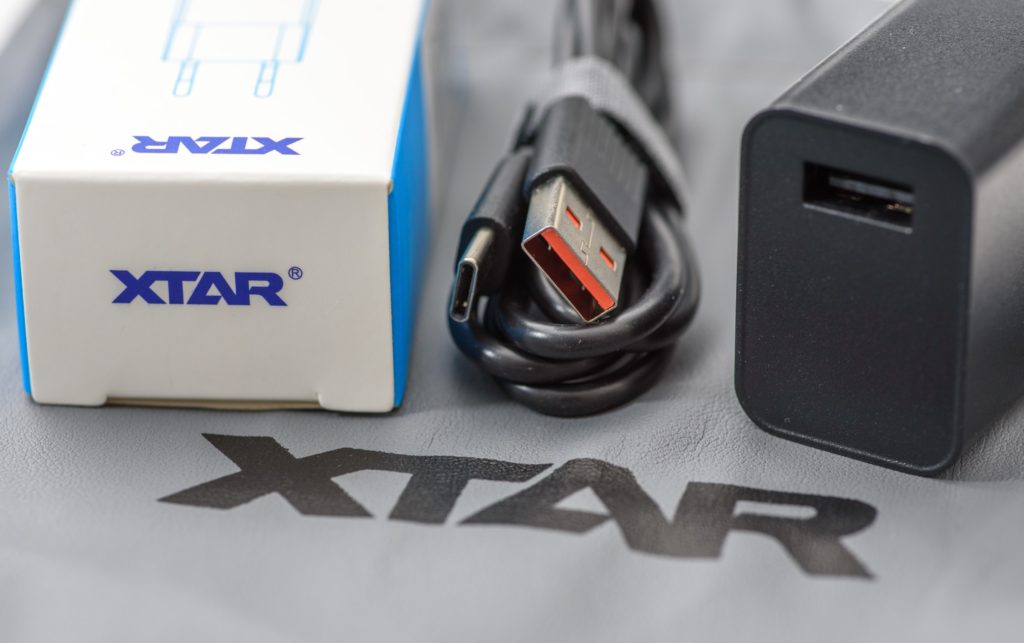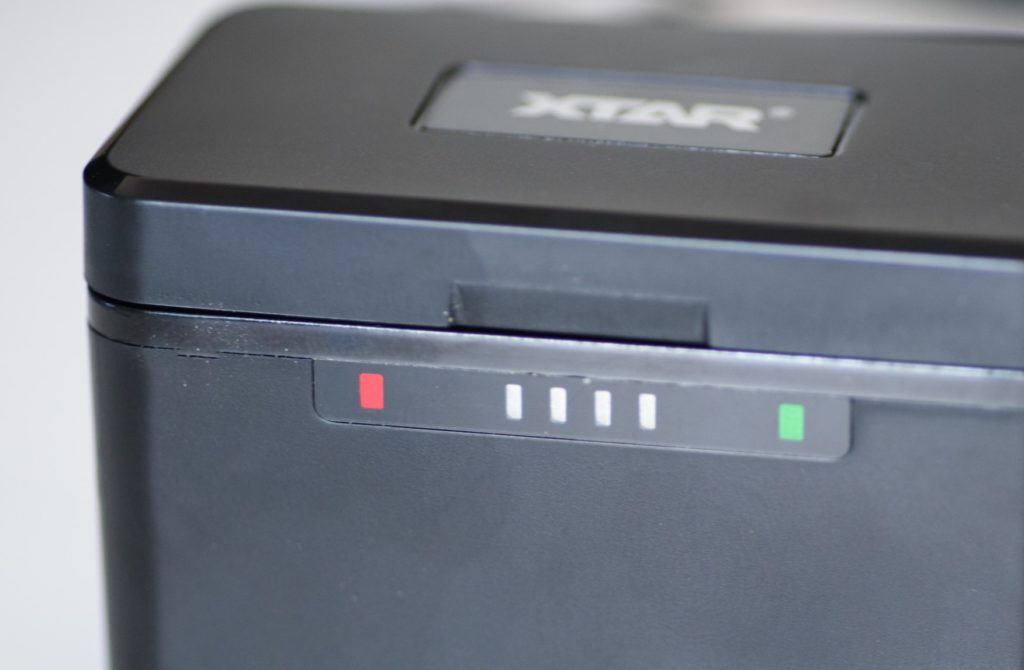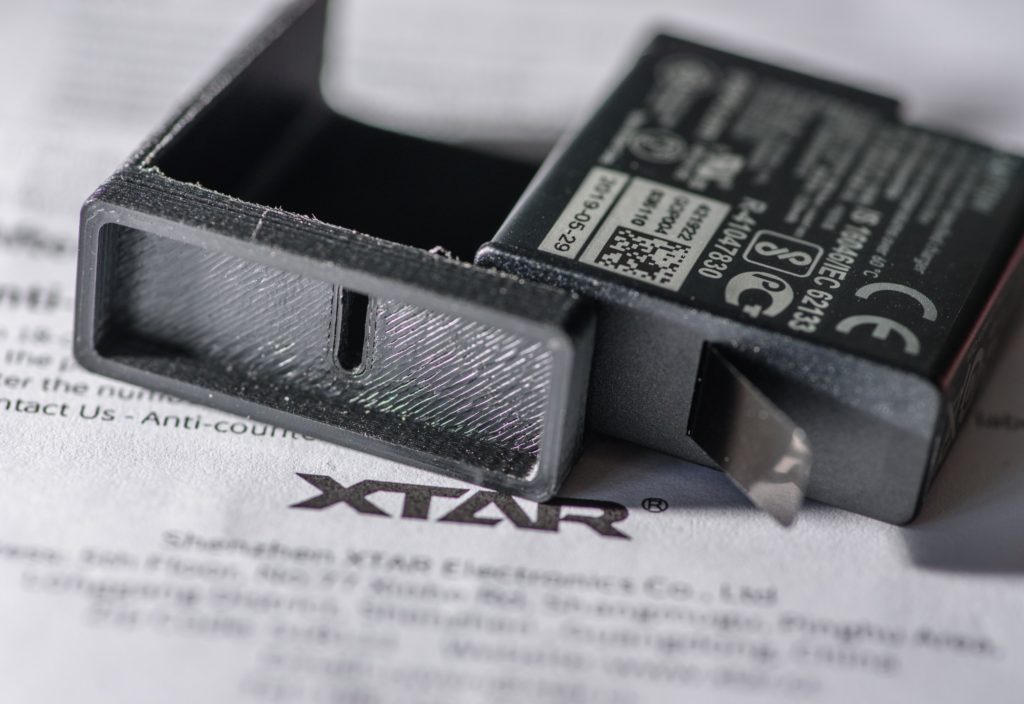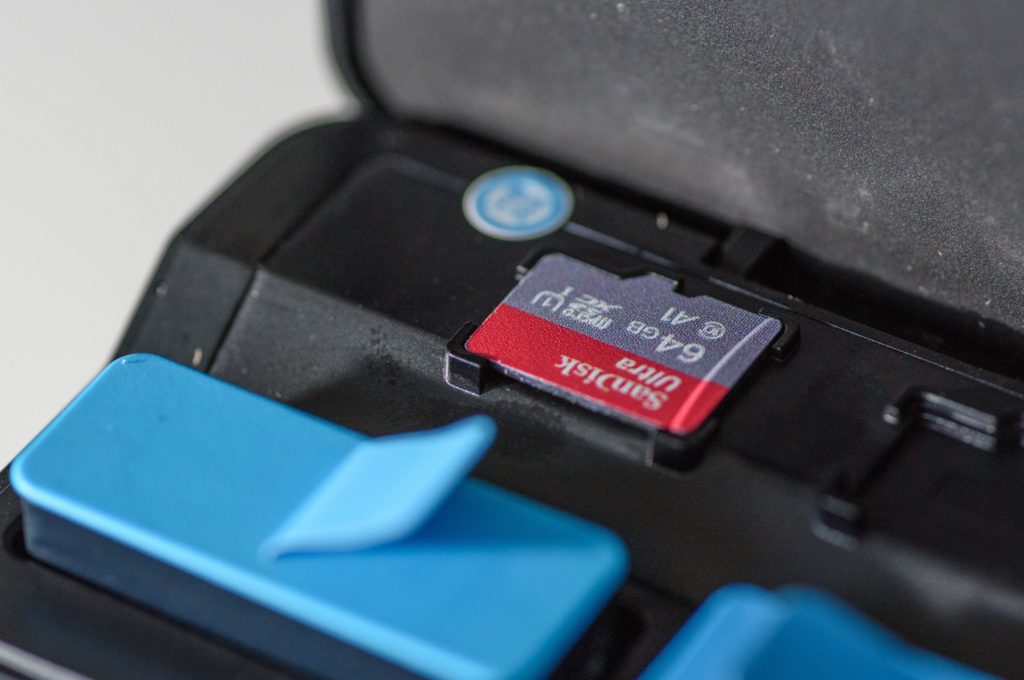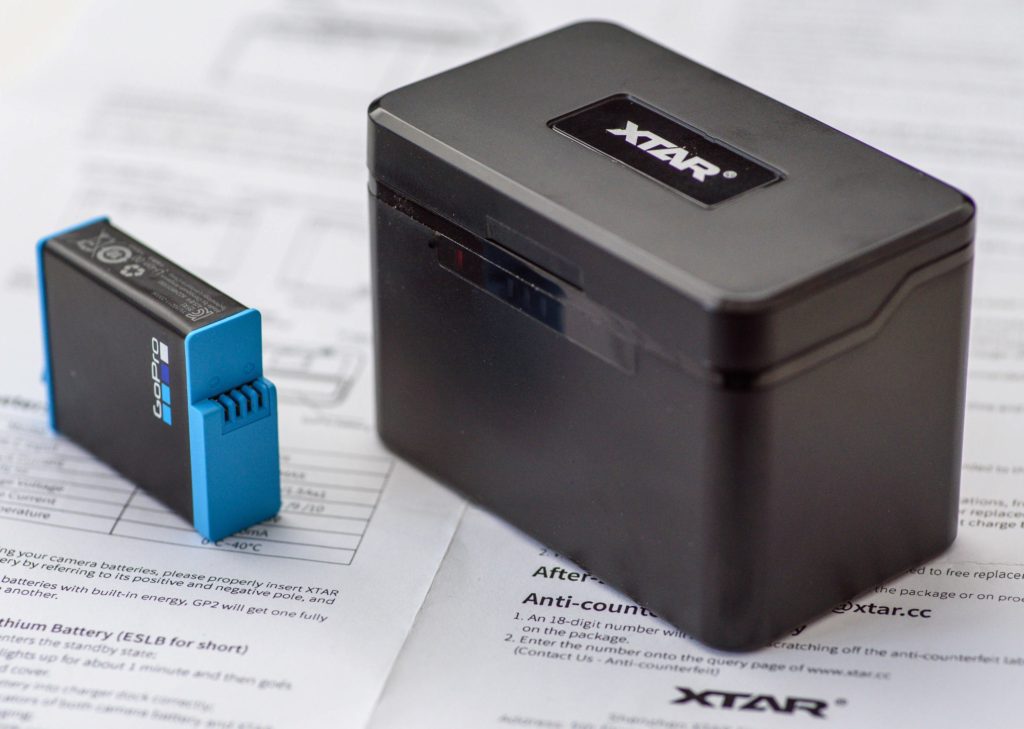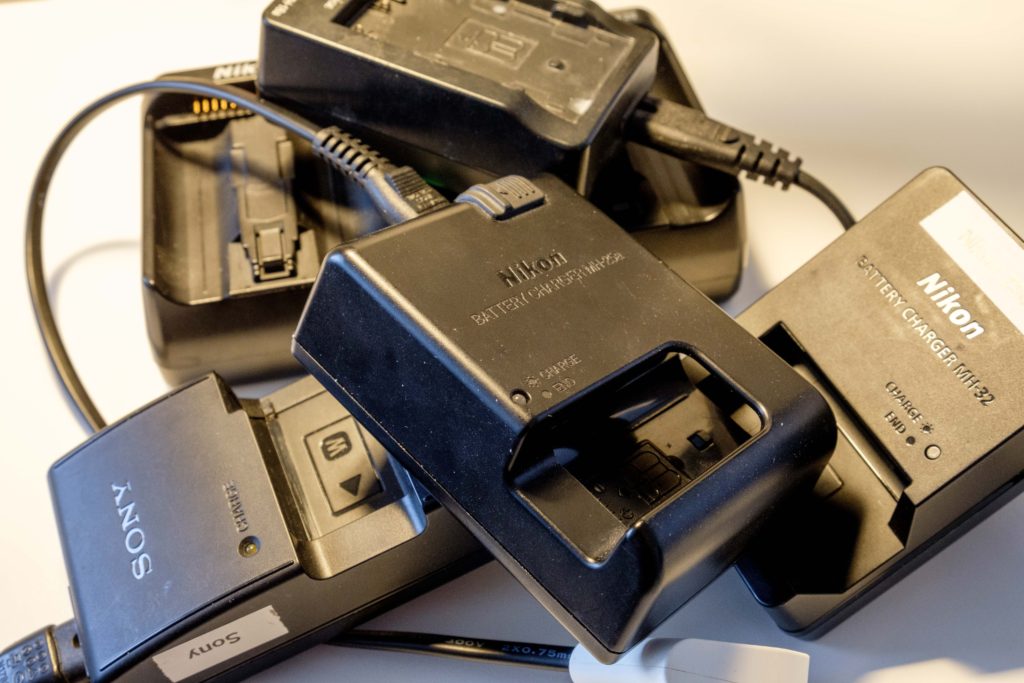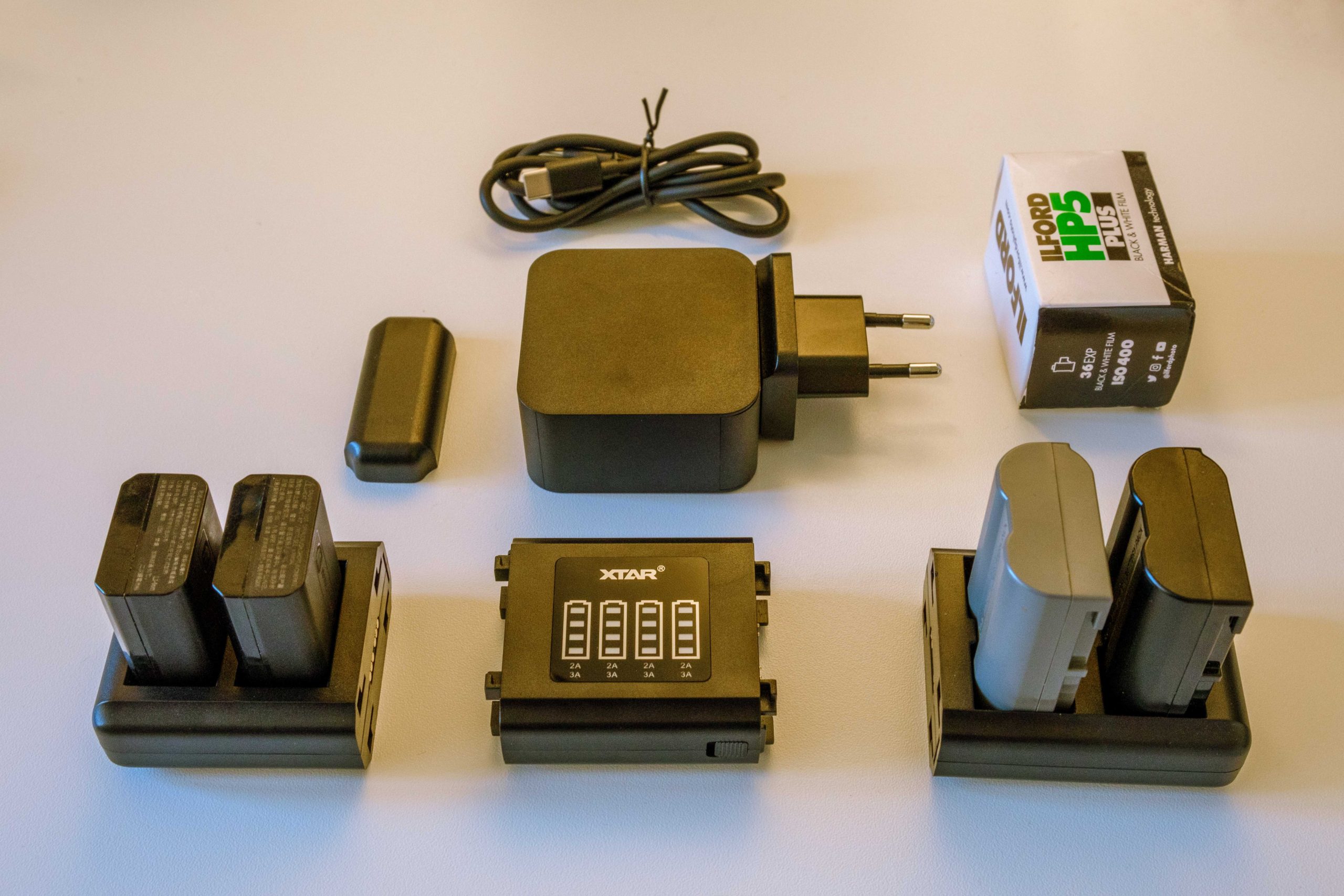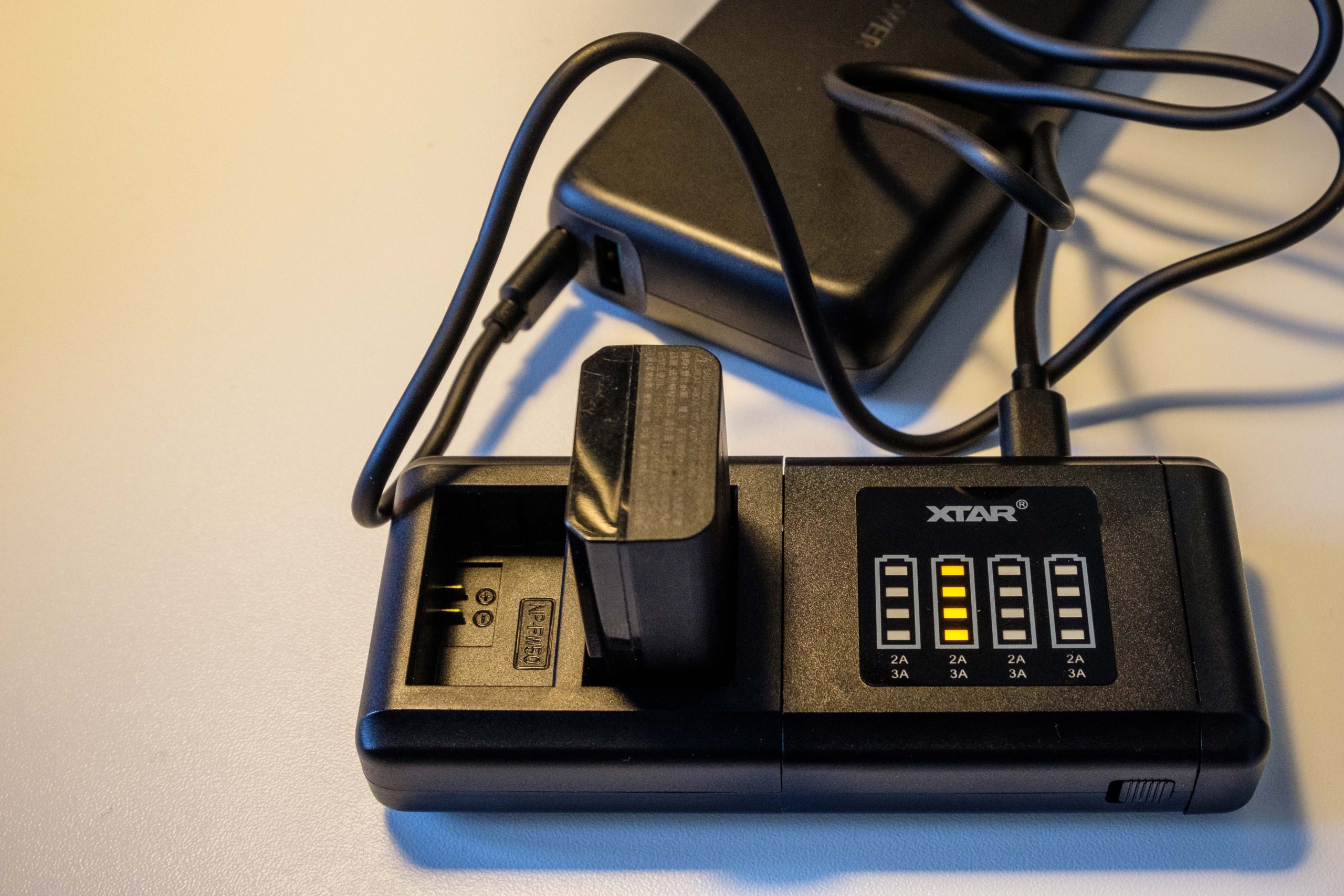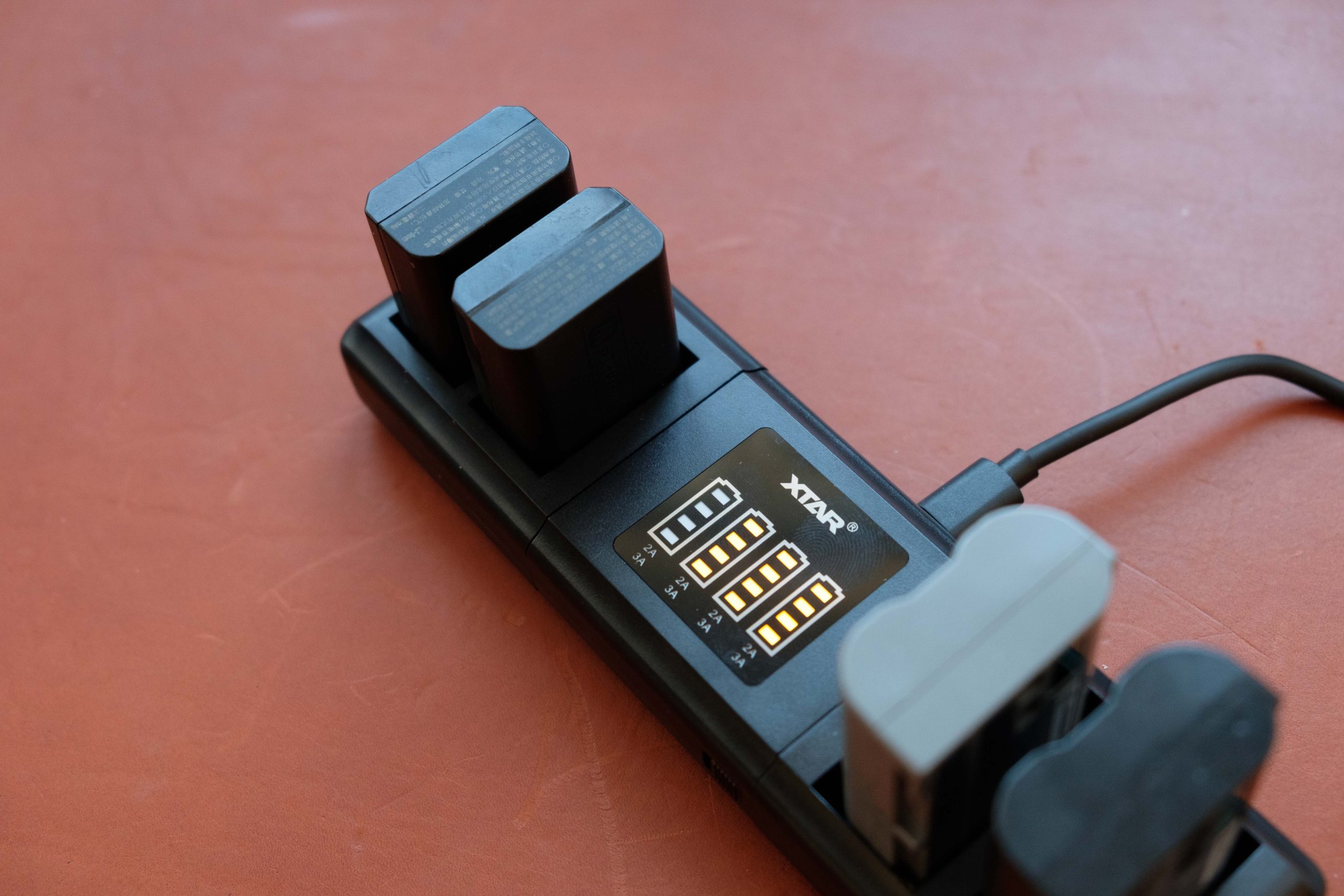Time to upgrade
My trusty regular GoPro batteries started to act funny here in January 2025. One simply grew fat (!) and would no longer fit into my GoPro HERO10 Black, and the other one told me there was 85% capacity left and two seconds later the GoPro would shut down with a message that there was no more battery! This happened on a cold and windy afternoon in Denmark, so maybe this is what is to be expected, but I had greater hopes for my less-than-two-years-old original GoPro batteries.
So, replacement batteries needed! Just to clarify: I prefer to buy batteries from GoPro rather than a 3rd party vendor. You probably can save a decent amount of money this way, but as operational stability and a minimum of surprises is important to me and my video production, I happily pay the premium buying original batteries. Your mileage may vary of course.
Package solution
A bit by chance, I came across this package from GoPro with a charger and two Enduro batteries. Enduro apparently works better in cold weather and they are only a few bucks / Euros more expensive than the light blue regular GoPro batteries.
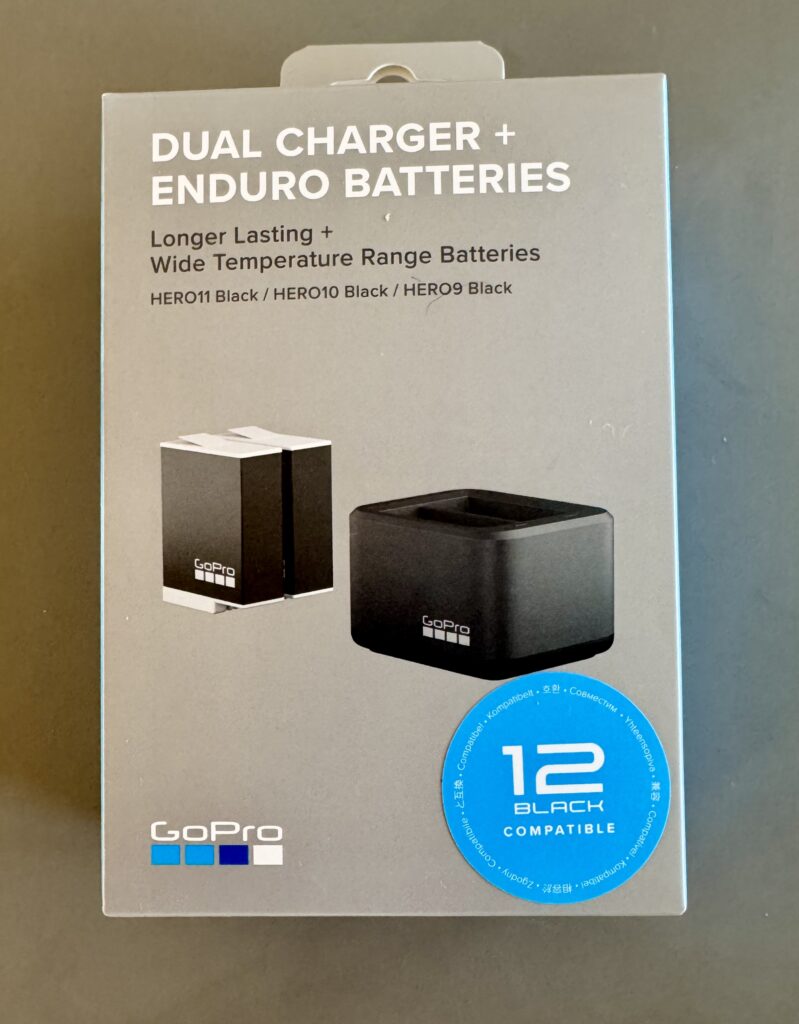
Also, I have so far been happy with (only) two batteries. My videos are mostly less than 10 minutes a piece and hence I shoot in relatively short bursts of 1-2 minutes at 4K and 25-30 FPS. So two batteries covers my needs, but you may find that for longer productions you need more than two.
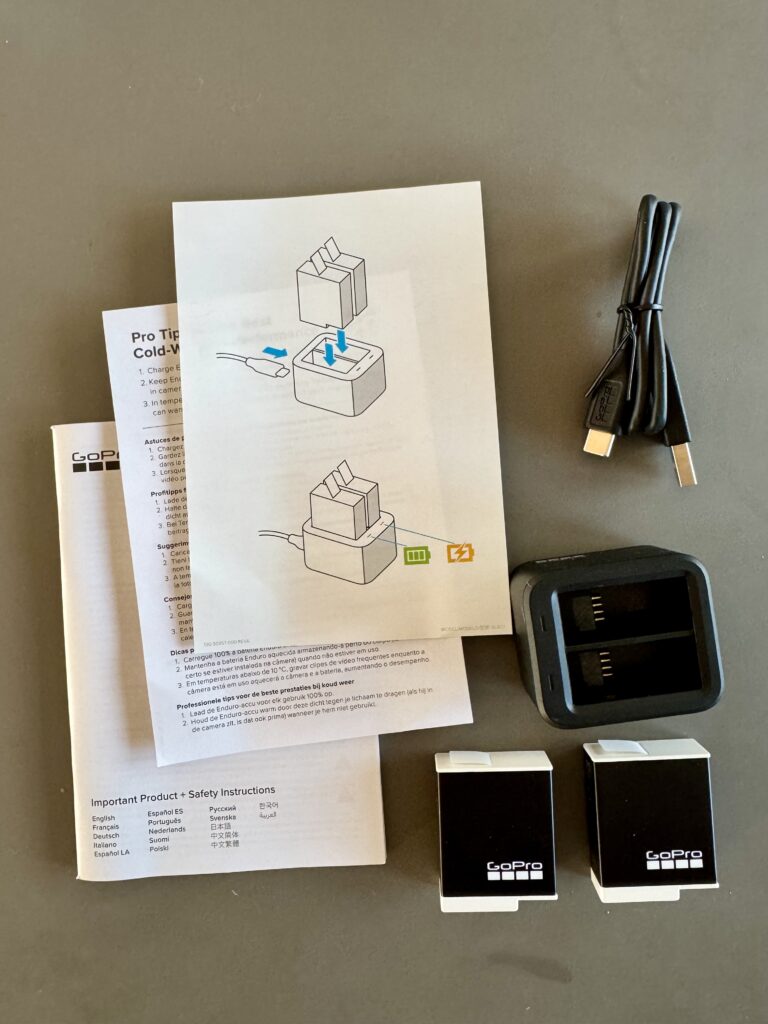
I was happy to find that the new batteries looks a lot like the old ones other than the colouring. They fit nicely into my GoPro HERO10 Black. The tin promises compatibility with HERO9 Black, HERO11 Black and HERO12 Black, but I have not tried these combinations.
Charging, first time
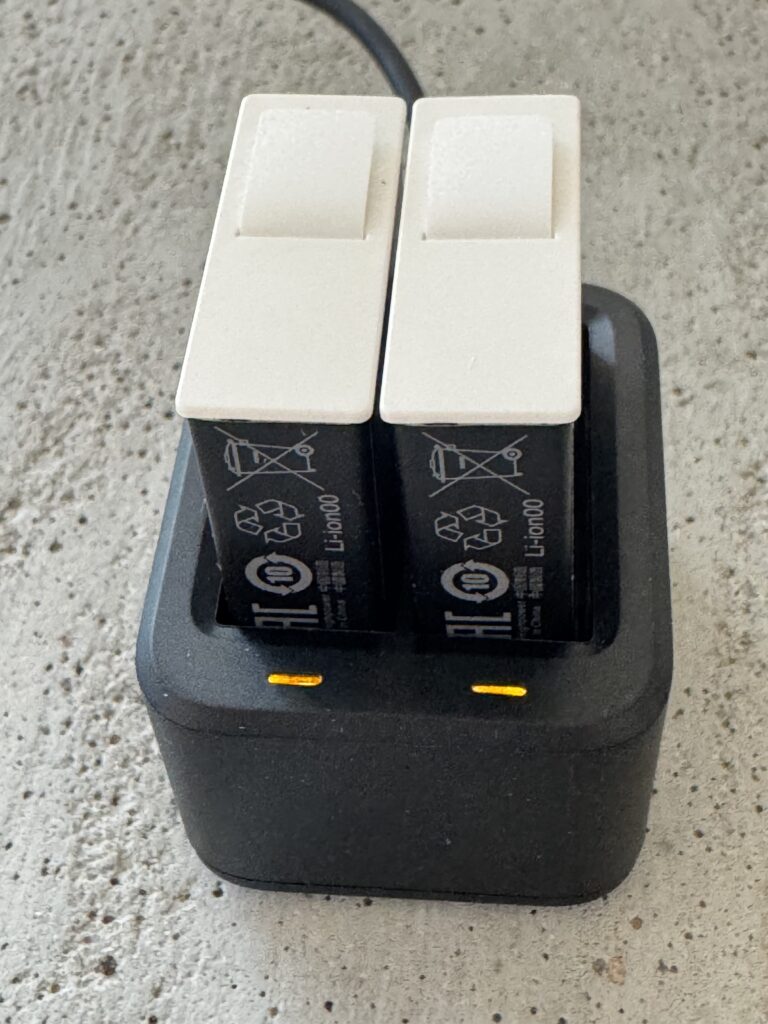
Charging the batteries for the first time took several hours, so I left it alone overnight and the next morning the two LEDs had changed from amber to green. I noticed that one battery completed charging faster than the other and apparently the charger gives priority to the battery with the most capacity, so you get one fully charged battery asap! Smart!
I used my Apple charger which yields 15-20 Watts and it worked well with the GoPro dual charger.
First use
Reading the specs, I was a bit surprised to find that the capacity of the two batteries is exactly the same, so how can one be more “Enduro” than the other, especially in cold weather?
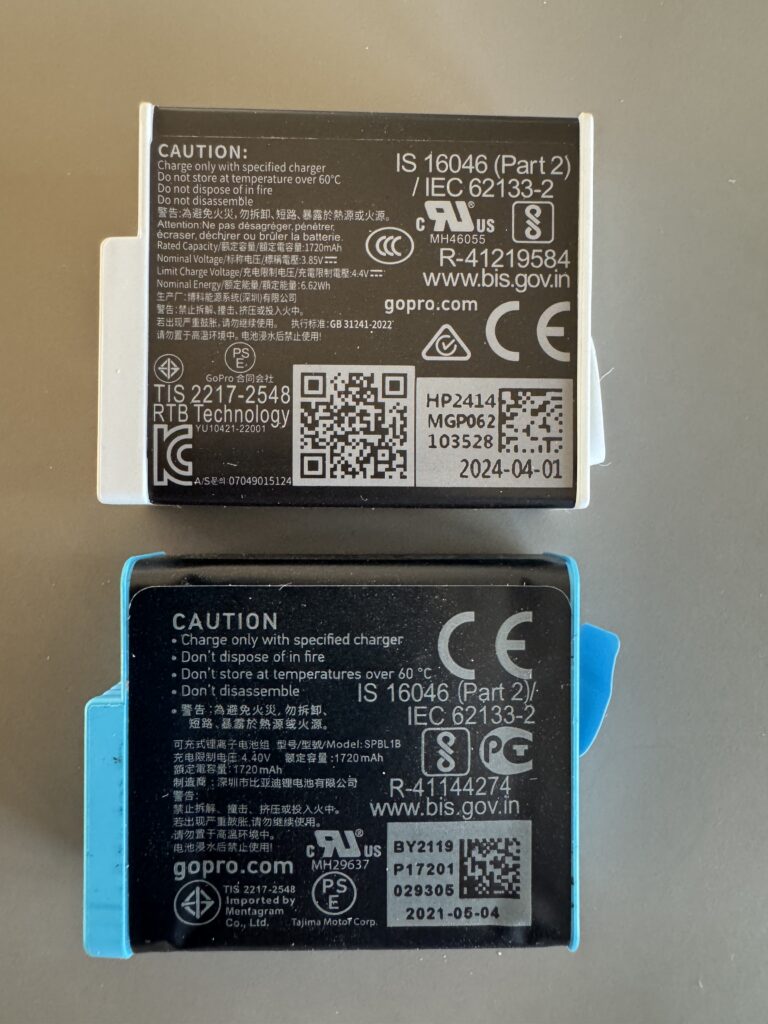
I have no answer to this good question, but using the batteries at winter I can confirm that the Enduro batteries seem to last longer. And they have a very different “curve” in terms of remaining battery: My regular ones seem to drop very fast in the beginning of use and then have a more flat curve towards running flat. The Enduro ones seems to be more linear, i.e. they are much better at delivering a steady decline in remaining capacity than the regular light blue ones.
If you read the 2021 review by DCRainmaker, it seems to confirm that systematic measurements show a much improved performance by the Enduro batteries over the regular ones. I have not been able to compare the regular ones with Endurance, as both my regular batteries are broken. However, although I cannot provide evidence, I have a pretty good feeling that the difference is solid.
Conclusion
For me and my use of the GoPro HERO10, this package is just right. It may not be the cheapest option out there, but my philosophy is that it is better to be safe than sorry, also when you pay a little premium. If you work in cold conditions like me (= Winter in Denmark) and struggle to make the regular light blue batteries perform in the cold, then the Endurance batteries may be just what you have been looking for.
Further reading
Review: Laowa FF 15mm F5.0 Cookie Lens (Nikon Z mount)

